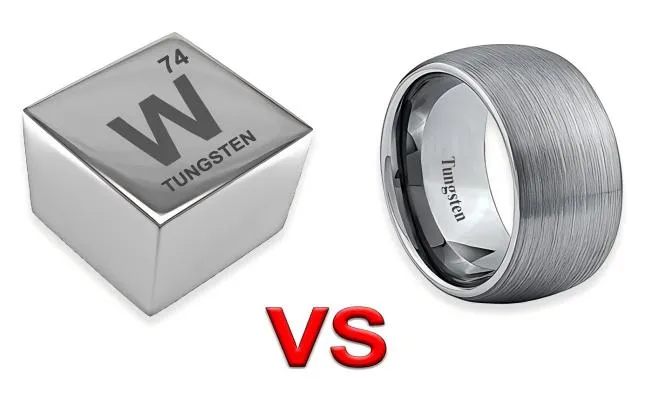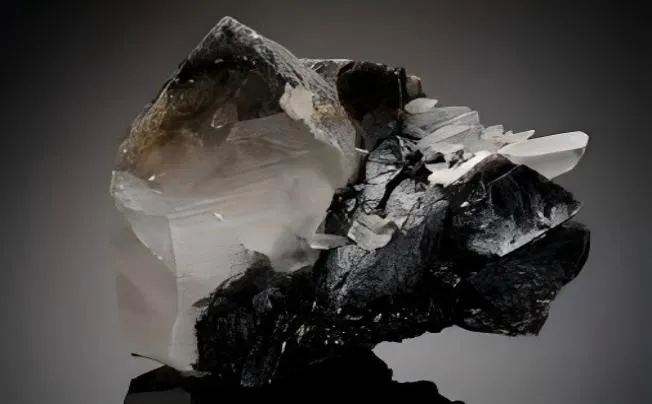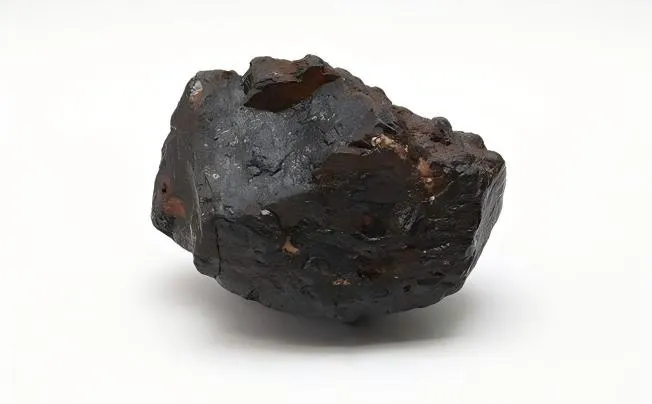Tungsten, also known as wolfram, is a lustrous gray metal with the atomic number 74. Discovered in 1781 by Swedish chemist Carl Wilhelm Scheele, tungsten is renowned for its remarkable strength and durability.
Chemical Properties
Corrosion Resistance
Tungsten's remarkable resistance to corrosion is one of its most valuable attributes, setting it apart from many other metals, including gold. Tungsten's inertness to most acids and bases is a testament to its stability and durability in harsh chemical environments. For instance, tungsten can withstand the corrosive effects of hydrochloric acid, sulfuric acid, and even aqua regia—a potent mixture of nitric and hydrochloric acids that dissolves gold.
This resistance is primarily due to the formation of a protective oxide layer on the surface of tungsten, which acts as a barrier against further chemical attack. In industrial applications, this property makes tungsten an ideal material for components exposed to aggressive chemical environments, such as in chemical processing plants and laboratories.
In contrast, gold, while generally considered corrosion-resistant, is not immune to all chemical agents. Gold's susceptibility to certain chemicals, particularly aqua regia, is a significant drawback in applications where exposure to such substances is unavoidable.
Aqua regia's ability to dissolve gold is due to the formation of chloroauric acid, which effectively breaks down the metal's structure. This vulnerability limits gold's utility in environments where strong acids are present.
Furthermore, gold can tarnish over time when exposed to sulfur compounds in the air, resulting in the formation of gold sulfide, which dulls its luster. This tarnishing, although superficial, can be a concern for applications where aesthetic appeal is important, such as in jewelry and decorative items.
Reactivity
Tungsten's low reactivity is another key factor contributing to its superiority over gold in many applications. Tungsten's stability is evident in its reluctance to form compounds with other elements under normal conditions. This low reactivity is due to tungsten's high ionization energy and the strength of its metallic bonds, which make it difficult for other atoms to displace tungsten atoms from their positions in the crystal lattice.
As a result, tungsten does not readily react with oxygen, hydrogen, or nitrogen at room temperature, ensuring its integrity in a variety of environments. This stability is crucial in applications such as filament materials in incandescent light bulbs, where tungsten's ability to withstand high temperatures without reacting with the surrounding gases is essential for longevity and performance.
Gold, on the other hand, exhibits higher reactivity compared to tungsten, particularly in the presence of certain chemicals. While gold is relatively inert in air and water, it can react with halogens, such as chlorine, to form compounds like gold(III) chloride.
This higher reactivity can be a drawback in applications where stability is paramount. For instance, in electronic components, gold's tendency to form compounds with other elements can lead to the degradation of contacts and connections over time, potentially causing failures in critical systems.
Additionally, gold's reactivity with mercury, forming an amalgam, can pose challenges in applications where mercury is present, such as in certain medical devices and industrial processes. The disparity in reactivity between tungsten and gold underscores the former's advantage in applications requiring long-term stability and resistance to chemical interactions.
Practical Applications
Industrial Uses
Tungsten carbide, a compound of tungsten and carbon, is widely used in drill bits, saw blades, and other cutting tools due to its superior wear resistance and ability to maintain sharpness under extreme conditions.
In high-temperature applications, tungsten shines as well; it is used in furnace components, rocket nozzles, and even in the filaments of incandescent light bulbs, where it can withstand temperatures up to 3,422 degrees Celsius without melting. The durability and reliability of tungsten in these applications underscore its superiority over other materials.
In contrast, gold's industrial applications are quite limited. While gold is an excellent conductor of electricity and does not corrode, these properties are not as critical in many industrial settings where strength and heat resistance are paramount.
Gold's softness makes it unsuitable for cutting tools or high-temperature environments. It is occasionally used in specialized applications, such as in the aerospace industry for thin-film coatings to reflect infrared radiation, but these uses are niche and do not compare to the broad utility of tungsten in industrial settings.
The economic impact of tungsten's industrial applications cannot be overstated. Industries reliant on cutting and shaping materials, such as manufacturing and construction, benefit immensely from tungsten's durability and longevity.
This not only reduces the frequency of tool replacements but also enhances productivity and efficiency. Gold, on the other hand, offers little in terms of industrial efficiency, making tungsten the clear choice for those seeking robust and reliable solutions.
Jewelry and Fashion
Tungsten has made significant inroads into the world of jewelry and fashion, primarily due to its remarkable durability and scratch resistance.
Tungsten carbide rings, often combined with other metals like cobalt or nickel, offer a level of hardness that far exceeds that of traditional precious metals. This makes them ideal for everyday wear, as they can withstand the rigors of daily life without showing signs of wear.
The aesthetic appeal of tungsten jewelry is also noteworthy; it can be polished to a high shine or given a brushed finish, offering versatility in style that appeals to modern consumers. Gold, while traditional and widely appreciated for its luster and historical significance, has several drawbacks when compared to tungsten in jewelry.
Gold's softness means that it is prone to scratching and denting, requiring regular maintenance to keep it looking its best. Furthermore, gold jewelry often needs to be alloyed with other metals to increase its durability, which can dilute its purity and value.
The need for frequent repairs and the potential for losing small parts like gemstones can make gold jewelry less practical for everyday wear compared to the sturdy, low-maintenance nature of tungsten. The shift towards tungsten in the jewelry industry is also driven by changing consumer preferences.
Many people now value practicality and longevity over traditional notions of value. Tungsten's ability to maintain its appearance and structural integrity over time aligns perfectly with this trend.
Electronics and Technology
Tungsten is often used as a contact material in semiconductor devices, where its stability at high temperatures ensures reliable performance. Additionally, tungsten's low thermal expansion coefficient helps maintain the integrity of electronic components under varying temperatures, making it a crucial material in the development of advanced technologies.
Gold, while still widely used in electronics, particularly in connectors and circuit boards due to its excellent conductivity and corrosion resistance, faces potential challenges in maintaining its dominance. The high cost of gold, coupled with its softness, can lead to issues in high-wear applications.
Moreover, as technology advances, the demand for materials that can withstand increasingly harsh conditions grows. Tungsten, with its superior mechanical properties, is well-positioned to replace gold in many applications, especially those requiring durability and high-temperature performance.
The transition from gold to tungsten in electronics is already underway in some sectors. For example, in the development of 5G technology and other high-frequency applications, tungsten's ability to handle high power densities and temperatures makes it a preferred material.
As the electronics industry continues to evolve, the shift towards materials like tungsten, which offer both performance and cost advantages, is likely to accelerate.
Economic and Environmental Considerations
Tungsten, often overshadowed by more glamorous metals like gold, holds significant economic promise due to its relative abundance and widespread utility.
Unlike gold, which is predominantly valued for its aesthetic appeal and used primarily in jewelry and as a financial asset, tungsten's economic value lies in its practical applications across various industries. Tungsten deposits are found in many parts of the world, with significant reserves in China, Vietnam, Russia, and Bolivia.
This global distribution reduces the risk of supply chain disruptions and allows for more stable pricing compared to gold, which is heavily concentrated in fewer regions, such as South Africa and Australia. Economically, this means that tungsten can offer more predictable and potentially lower costs for industries reliant on its unique properties, such as aerospace, automotive, and manufacturing.
From an environmental perspective, tungsten mining and processing can be more sustainable than gold extraction. Gold mining often involves the use of cyanide, a highly toxic chemical that can leach into water supplies and harm ecosystems.
In contrast, tungsten mining typically uses less harmful chemicals and has a smaller environmental footprint. Additionally, tungsten's durability means that products made from it last longer, reducing the need for frequent replacements and thus minimizing waste.







